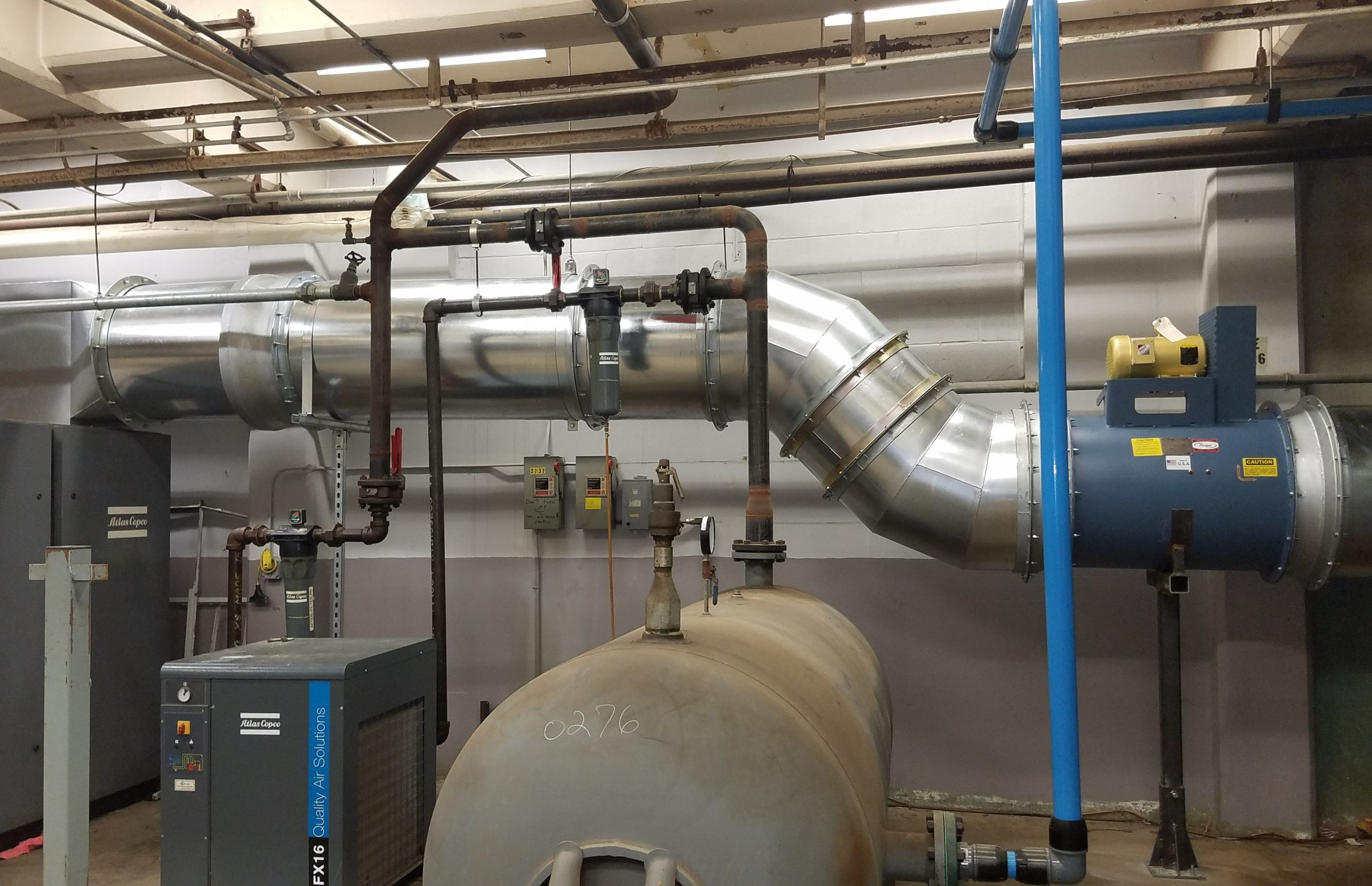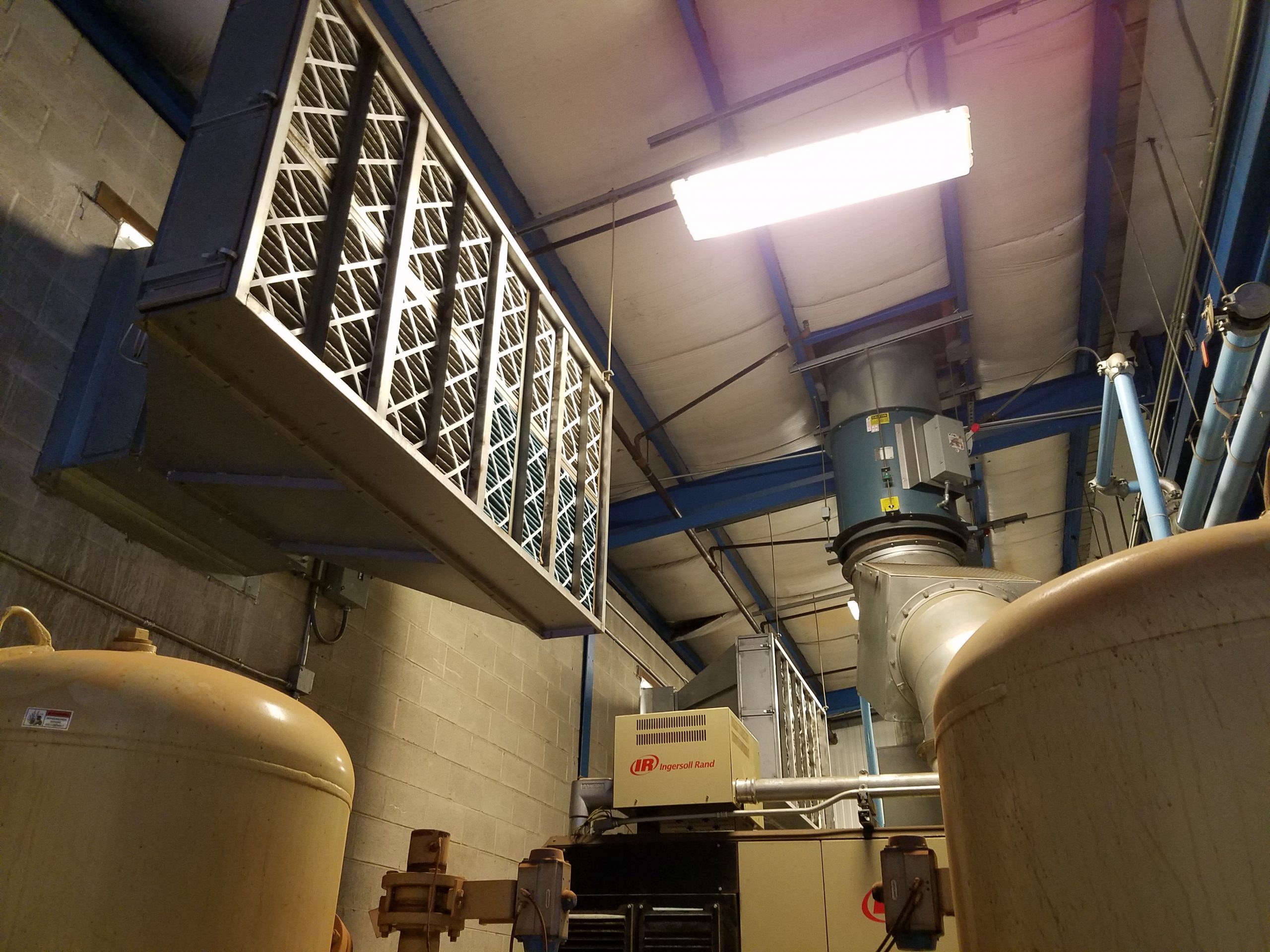The location of the compressor within a facility determines how the ventilation system is designed.
If the compressor room is in a plant’s interior, we address this issue by ducting the discharge of the internal compressor fan outdoors with an auxiliary inline axial fan. Performance of this fan will include duct static pressure loses with the fan selected based on compressor exhaust air temperature.
Ducting the heated air outside is completed in several ways. Direct connection to compressor fan outlet, a hood over the outlet or a null fitting at the outlet.
Direct connected duct is tricky and not always the best design. Two fans in a series need to be carefully configured to avoid overloading motors.
When using a hood design, the heated air is captured and exhausted. Cross drafts must be eliminated to maximize the hood’s effectiveness.
The most common design uses a null fitting at the compressor fan outlet. Null fittings allow control of the mixing of heated exhaust air and room air at reduced pressure. It can be adjusted with manual adjustable slots to maximize capture and minimize room air exhaust.
A Variable Frequency Drive (VFD) can also be used to adjust the auxiliary fan performance to “tweak” the exhaust system. The problem always exists that unauthorized adjustment of the fan can create problems.
If the compressor room is adjacent to an outside wall, we often use wall mounted room exhaust fans with backdraft dampers to remove the heated air from the space. The volume of air exhausted is based on the compressor fan specifications or an air change calculation if fan data is unavailable. Roof mounted fans are an option but not typically used because of roof surface modification expense.
Compressor rooms with exhaust fans may still be “hot” unless we supply adequate replacement or supply air to the space. This makeup air can come from the plant’s interior or through outside air intake louvers. When bringing air in from outside a building, the air may be filtered or unfiltered, depending on ambient particulate loads.
Compressor rooms interior to a facility draw air from other parts of the plant and are typically clean enough. In all cases, caution must be used when drawing air into a room as negative pressure can cause doors to fly open or slam shut due to the pressure differential.
SysTech supplies air filter packages and adjustable louver packages, either manual or actuator operated, to modulate airflow and maintain temperatures during the winter months.
We are in the dog days of summer and receive panic calls for compressor room ventilation as we do every year. In the past, we have worked through this problem, but this year, the manufacturing and delivery of fans have drastically fallen off due to Covid and the lack of production workers. We can’t get exhaust fans from our manufacturers until early next year, and we don’t see an end to this problem.
If you have issues with your compressor this year, now is the time to budget or order equipment for next summer’s heat. Advanced planning has never been more important and will lead to manufacturing success in the new year.




